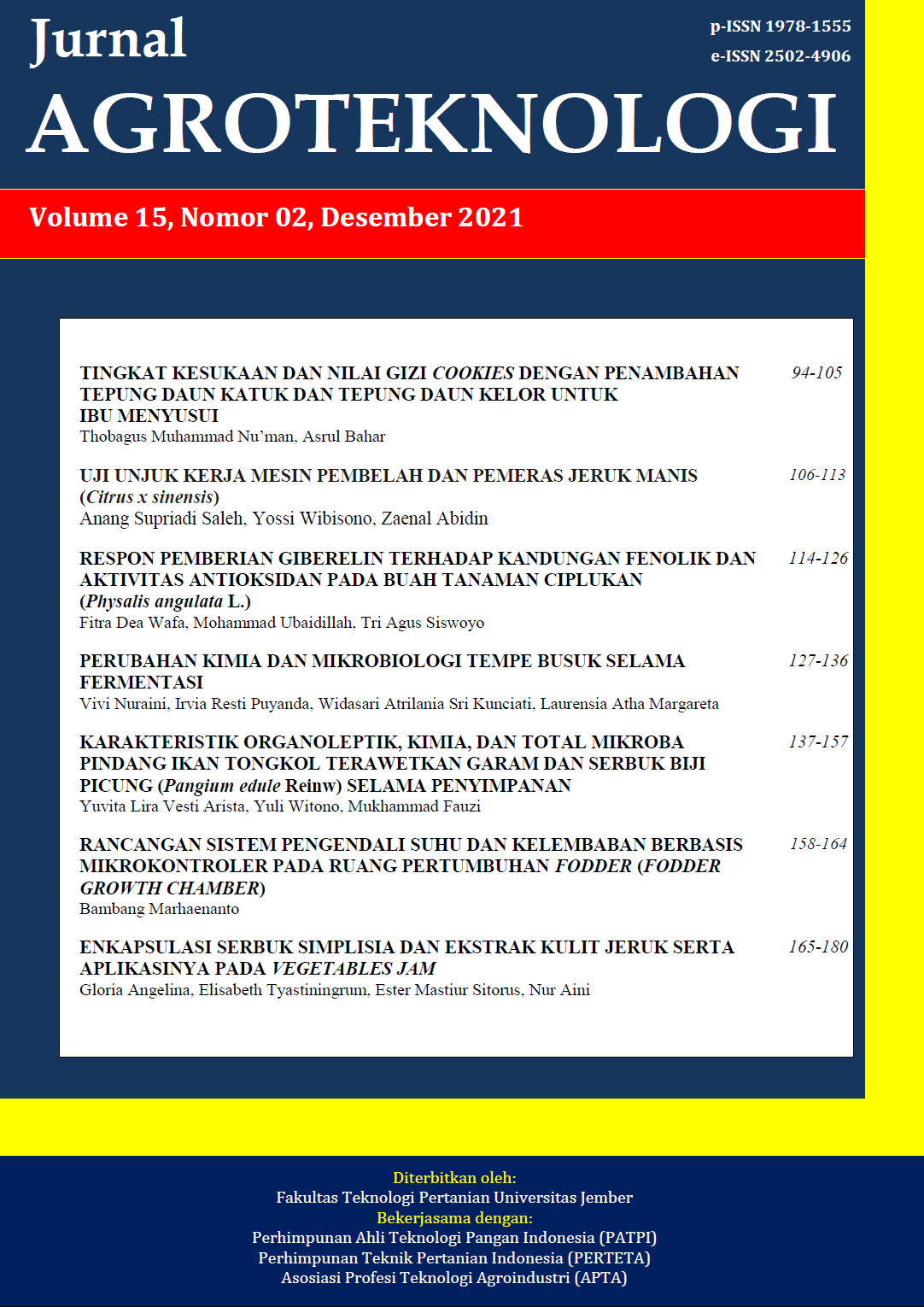KARAKTERISTIK ORGANOLEPTIK, KIMIA, DAN TOTAL MIKROBA PINDANG IKAN TONGKOL TERAWETKAN GARAM DAN SERBUK BIJI PICUNG (Pangium edule Reinw) SELAMA PENYIMPANAN
Abstract
Picung (Pangium edule Reinw) seeds had been used as fresh fish preservatives for a long time, there had not been reported about the boiled salted tuna using picung seeds. The aim of this research was to determine the chemical organoleptic properties and total microbe of boiled salted tuna with the addition of salt and picung seed powder during storage. This research consisted of 2 factors, those were variations of the salt concentration which consisted of G1 (the use of 10% of salt), G2 (the use of 15% of salt), and G3 (the use of 20% of salt) and the variations of picung seeds powder which consisted of P1 by adding 1% of picung seeds powder (150-200 g of the fish weight), P2 by adding 3%, and P3 by adding 5%. It was done three times. The organoleptic, chemical, and total plate count (TPC) of boiled salted tuna observation was done during 0, 3, 6, and 9 days of storage. The organoleptic test of boiled salted tuna by using 20 persons of the untrained panelists (permanent respondents). The organoleptic observation parameters consisted of appearance, aroma, taste, and mucous. The result of boiled salted tuna which used 15% (G15) and 20% (G20) of salt and added 3% (P3) and 5% (P5) of picung seeds powder could be still accepted by the panelist until in day-9. In addition, it was also able to maintain chemical properties up to day-6 of storage including parameters of free fatty acid and TVBN (total volatile basic nitrogen) content. The use of salt and powdered picung seeds with a ratio of 15%:5% (G15P5) and 20%:5% (G20P5) was able to maintain the amount of TPC until the day-6 of storage not to exceed the specified threshold.
Keywords: boiled salted tuna, organoleptic, TPC, TVBN

This work is licensed under a Creative Commons Attribution-ShareAlike 4.0 International License.
Jurnal Agroteknologi has CC-BY-SA or an equivalent license as the optimal license for the publication, distribution, use, and reuse of scholarly work. Authors who publish with this journal retain copyright and grant the journal the right of first publication with the work simultaneously licensed under a Creative Commons Attribution-ShareAlike 4.0 International License that allows others to share the work with an acknowledgment of the work's authorship and initial publication in this journal.
 JURNAL AGROTEKNOLOGI
JURNAL AGROTEKNOLOGI 










.png)

